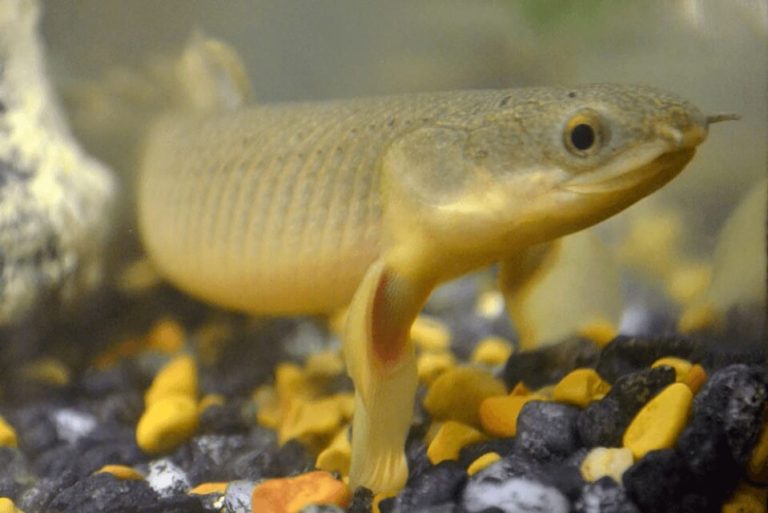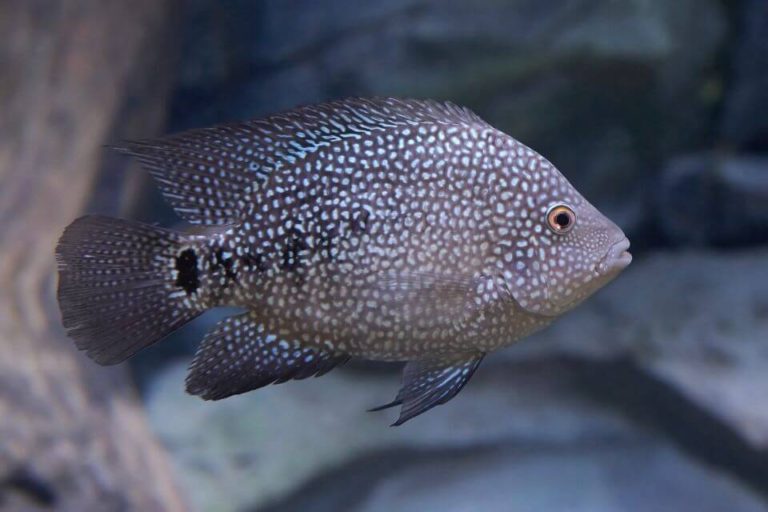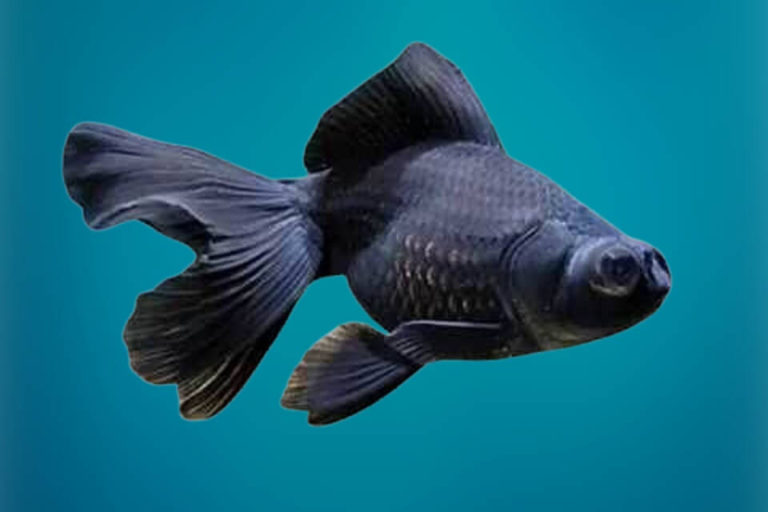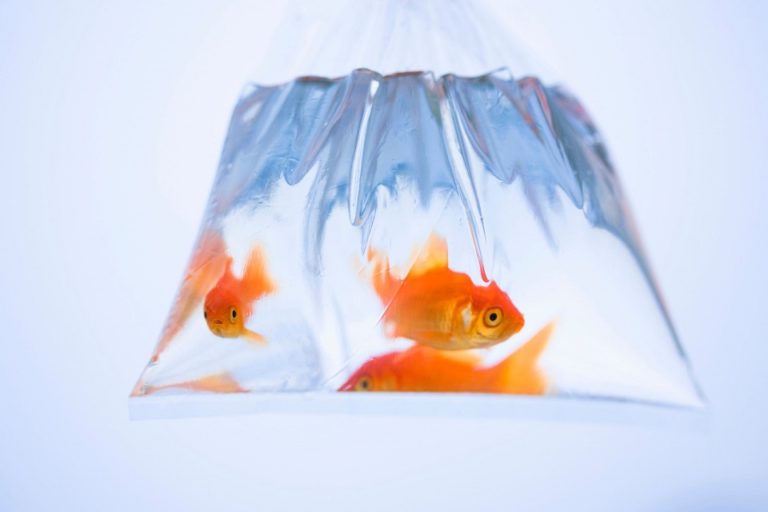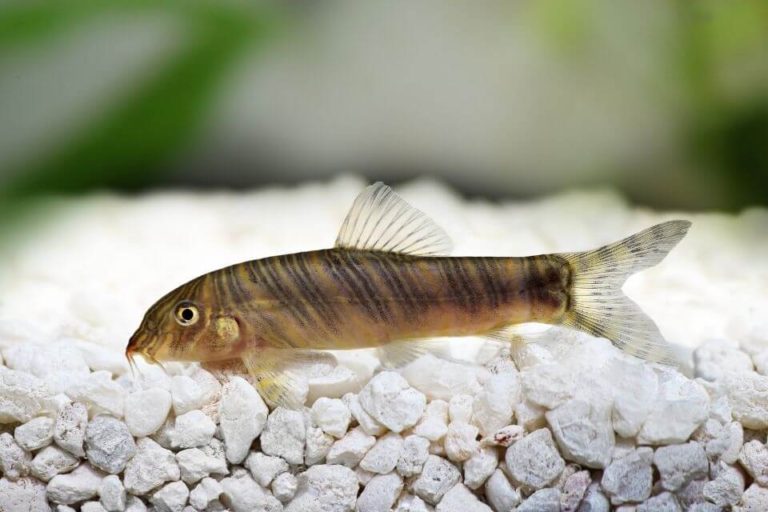Roseline Shark Care (Danison Barb): Size, Lifespan, Tank Mates, Diet
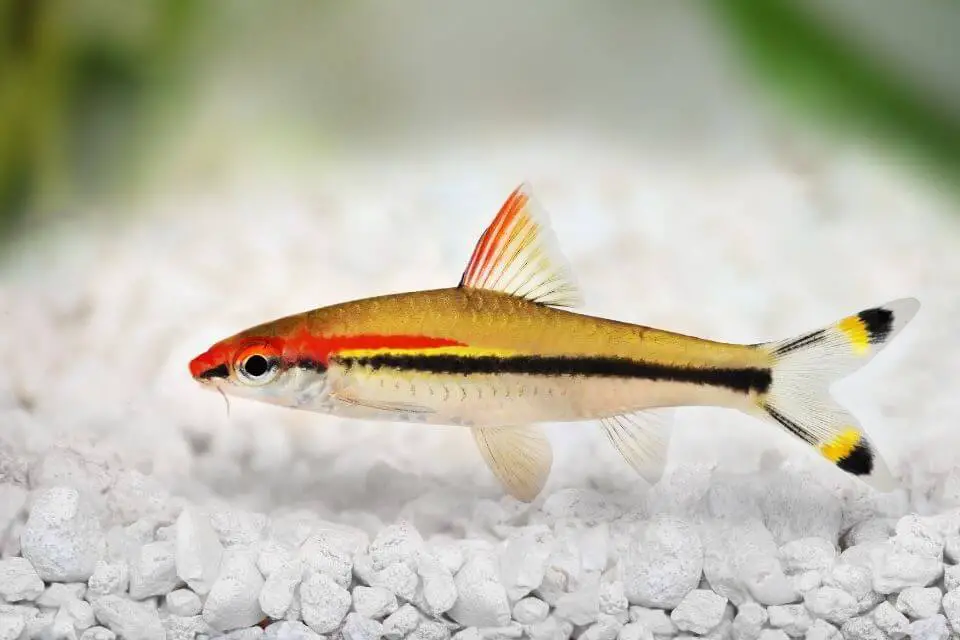
Roseline Shark (aka Denison Barb) is a fantastic freshwater fish species that is very impressive and colorful. However, it is now endangered in its natural habitat and needs careful attention to secure them.
Their reduction in number can be attributed to deforestation and pollution since they are available in commercial breeding programs in Eastern Europe and Southeast Asia.
There is nothing to worry about if you are a novice fish keeper and want to keep Denison Barb in your aquarium because they are very easy-going fish species.
This fish species is very colorful and impressive to observe. Due to its beautiful aesthetics, Roseline Shark is an excellent creature to have in an aquarium in your home since it will help improve the aesthetic of your living room.
In this Roseline Shark care guide, we are going to provide you will all the necessary details that you may need to rare this beautiful fish species in an aquarium in your home.
| Quick Facts: | |
|---|---|
| Common Names | Roseline Shark, Danison Barb, Denison's Barb, Red-Line Torpedo Barb, Miss Kerala |
| Origin | Fast-flowing streams and rivers in the Sahyadri Mountain range in India |
| Family | Cyprinidae |
| Scientific Name | Sahyadria denisonii (syn. MicrorasbLabeo denisonii) |
| Care Level | Easy |
| Temperament | Peaceful |
| Social | Community fish |
| Diet | Omnivores |
| Size (average) | Up to 6 inches |
| Lifespan | Up to 5 years |
| Breeding | Egg layer |
| Minimum Tank Size | 50 gallons (approximately 190 liters) |
| Tank Setup | Freshwater, Gravel or Sand substrate, Driftwood, and Rocks for decorations, A lot of live plants |
| Tank Temperature | 60 - 77 °F (15 – 25 °C) |
| Water Hardness | 5 - 25 dGH |
| Water pH Level | 6.5 - 8.0 |
Species Overview
Roseline Shark is sometimes referred to as Denison Barb, Denison’s Barb, Red-Line Torpedo Barb, or Miss Kerala. The scientific name for Roseline Shark is “Sahyadria denisonii“, and it is freshwater fish from the family of Cyprinidae.
Roseline Shark or Denison Barb is a beautiful fish with impressive aesthetics thanks to its colorful, active, and friendly nature, making it a fantastic addition to an aquarium in your home.
This fish species was discovered in 1865. It is only found globally in four locations, i.e., Weston Ghats, Achankovil River in India, Cheenkannipuzha (Valapattanam River tributary) near Mundakayam town in the Chaliyar River.
Several factors over the years, such as overfishing due to its popularity, deforestation, and pollution, lead to the decrease of the Denison Barb population in their natural habitat, and because of this, this fish species is now considered endangered.
Additionally, on the IUCN Red List, Roseline Shark populations are regarded as decreasing. Luckily, Roseline Sharks or Denison Barbs are now available on commercial fish breeding programs in Eastern Europe and Southeast Asia.
The wild collection of this fish species is currently restricted. Further, Roseline Shark like inhabiting streams, rivers, and pools with clear and highly oxygenated water, plus they like living in a large school in their natural habitat.
Denison Barb is considered an active, peaceful schooling species, and when it is fully grown, it can be around 6 inches plus; when you take good care of Roseline Shark in your aquarium, it can live for up to 5 years.
Roseline Shark Size
It is relatively large when they are fully grown. Roseline Shark size can measure around 6 inches. Their sizes depend on the regional variant.
You may find most Roseline Shark size measuring around 4.5 inches when fully grown, but they will rarely go past 6 inches.
Additionally, the female Denison Barb size is slightly larger than their male counterparts. The females also have rounder bodies than males, while the males have more bright colors than females.
If you want to rare Roseline Shark in an aquarium in your home and make it happy and comfortable, you will need at least 50 gallons fish tank. This fish species also grows faster since they have a steady growth rate.
Roseline Shark Lifespan
This fish species is a living organism, and the Roseline Shark lifespan of most living organisms is determined by health and care. Factors such as its food, diet, and habitat may influence how long Roseline Shark lifespan is.
If you take good care of Denison Barb and give them a good diet plus a well-kept habitat, they can live for up to 5 years.
If you do not provide excellent care for Roseline Shark in your aquarium, it may suffer from diseases mainly caused by bacterial infections, and its lifespan may be severely shortened.
Providing a habitat that mimics its wild habitat will significantly increase the Roseline Shark lifespan to its maximum. There have been incidences that Roseline Shark has lived for up to 8 or 9 years.
Appearance And Colors
Roseline Sharks has a long and torpedo-shaped body. Additionally, it has a broad base tail and two barbels underneath its mouthparts to scavenge for food.
If you look keen in the aquarium, you will see the females are more robust and have rounder bellies compared to males. Its dominant color is silver.
Depending on the lighting conditions in your room, you may see some tinges of yellow or gold as they swim in the aquarium. There is a black lateral stripe running along with this fish from the tip of its stout to the base of its caudal fin.
Further, you can see a parallel strip of red starting at its stout, running through its eye, and fading away at its midsection.
The tail fin features dark black and yellow stripes, and you may see a vibrant band of red in the front of its dorsal fin. The female Roseline Shark is a bit larger and has slightly duller colors.

This fish has a black eye at the front of its head, and it also features small fins, with the forked caudal fin being the largest. Once fully grown, Denison Barb may have a green-blue or emerald green coloration on the heads.
Because of Roseline Shark’s beautiful aesthetics, they are amazing creatures to have in an aquarium in your room since they will help in complementation and enhancement.
Behavior And Temperament
Denison Barb is a mid-level swimmer, but you can see them straying anywhere when feeding or looking for food. You may also find them swimming to the top of the tank to get more oxygen in case there is inadequate oxygen or the water is not very clear.
Roseline Sharks are very peaceful fish species that can get along very well with non-aggressive and active tankmates making them very friendly.
Denison Barb likes having ample space for swimming while showing off their colors; hence when kept in small spaced aquariums, they may show some aggressive tendencies.
They are considered fast swimmers, and if you put them with slow swimmer tankmates, they may accidentally cause some trouble. It has schooling and darting mating rituals, and if you observe them keenly, you see them creating a vivid and engaging display.
They also like swimming in school, and with a clear water aquarium, they will create a beautiful display of color that is very impressive and exciting to watch.
Due to the incredibly entertaining nature of these freshwater fish, you can observe them for a long, and they will significantly improve the décor of your room when they are in an aquarium.
When Denison Barb is kept alone in the aquarium, it may not express its natural behavior since it is a schooling fish. This may also affect its lifespan since it may not be happy and comfortable.
If you want to avoid any stress and aggression in an aquarium, you should keep them in a school of at least 4 to 6 with both males and females.
They like getting wound up and become more aggressive towards each other around dusk and dawn; hence it is not advisable to feed them around those times to limit the aggression.
Roseline Shark Care
In order to keep Roseline Shark in your aquarium and make them happy and increase their lifespan, there are specific requirements that you ought to look out for;
Caring for Denison Barb is not a very difficult process. You must make sure that you mimic their natural environment and conditions as much as possible since these fish species are quite sensitive.
Additionally, you should set a high standard for the water chemistry and purity in the aquarium since Roseline Sharks are fast swimmers and are used to fast-moving mountain water in their natural habitat.
Roseline Shark like jumping very much; hence you should ensure that your aquarium is suitably covered. Caring for these active freshwater fish species requires attention and preparation since they are susceptible to water changes.
– Roseline Shark Tank Size
Roseline Sharks are very active swimmers, and they move very fast; therefore, you should provide them with ample space in the aquarium. They also get very aggressive due to the lack of space.
In their natural habitat, Roseline Shark like swimming against the current. Therefore, to ensure this fish species stay comfortable, healthy, and happy in your aquarium without any aggression.
You should keep them in an amply spaced tank depending on their numbers. A small group of around 4 to 6 Roseline Sharks can be kept comfortably in a 50 gallons aquarium. If you increase the number, you should also increase the tank size.
If you provide more space or a large aquarium for a school of 4 to 6, the happier they will be, and the less they will show any signs of aggression between themselves and other tankmates. Each Roseline Shark requires around 6 to 10 gallons of water.
– Roseline Shark Tank Setup
When setting up an aquarium for Denison Barb, you should try to reminiscent its natural habitat as much as possible since it will play an integral role in preventing them from becoming stressed and losing their coloration.
The tank should have sand or fine gravel at the bottom of the aquarium. You should also bring some rocks and pebbles to the substrate to give your aquarium a more natural look. Roseline Shark likes searching for food around the substates.
Therefore, getting a soft substrate will reduce any scratching to the fish.
The decoration of the aquarium will help prevent Roseline Shark from having any stress, help them relax, and encourage them to develop their naturally vibrant colors.
Therefore, you should also replicate their wild environment by adding smooth stones and pebbles, but you should leave enough space for them to use in swimming.
Additionally, you should provide some hiding places such as caves and overhangs that Denison Barb can use to relax when stressed. You should also include driftwood and other natural decorative items that the fish can use as shelter when they desire some privacy.
Remember to add aquarium plants to mimic their natural habitat, and they will use them to retreat when stressed.
Roseline Sharks are active swimmers, and they like swimming against the current in their natural habitat. Therefore, you will need to provide highly well-oxygenated, fast-flowing water in the aquarium, and the tank water should be pristine.
You can use an external canister filter and a powerhead to achieve this. The lighting in your aquarium should be moderate since Roseline Shark are happy with normal lighting conditions.
Since you will have aquatic plants in the aquarium and other spots that these fish will use as hiding spots and shelter.
– Water Conditions and Parameters
In their natural habitat, Denison Barb inhabits highly oxygenated bodies of water with plant life. For these freshwater fish species, the water temperature should be between 60°F to 77°F (15 to 25 degrees Celsius).
The water acidity levels should be maintained at pH levels of 6.5 to 8.0 and the water hardness should be 5 to 25 dGH.
These freshwater fish can tolerate a generous range of parameters as long as you stick within acceptable ranges; you should not have any issues. Roseline Shark is sensitive to ammonia; hence the ammonia levels should be negligible.
You should use a trustworthy and accurate water test kit when monitoring the water parameters in your aquarium frequently, like throughout the week.
– Suitable Aquarium Plants
Adding plants to the aquarium with Roseline Shark will help in providing them with shelter and places that they can use to retreat and relax when they are stressed.
Here are the suitable plants in an aquarium with Roseline Shark;
- Dwarf Sagittaria
- Amazon Sword Plant
- Java Fern
- Jungle Val
- Water Wisteria
- Anubias Nana
- Java Moss
- Anacharis Plant
– Possible Diseases and Prevention
Roseline Shark can contact diseases just like other living things. Here are the Denison Barb common diseases, treatment, and prevention.
- Swim Bladder
This disease affects a gas-filled internal organ that possesses to aids and controls its buoyancy. This problem can be due to gastrointestinal problems like constipation brought by overfeeding or parasites.
The condition may lead to Roseline Shark having unusual swimming or sinking at the bottom, or even floating to the top of the aquarium.
You can treat this by reducing aquarium water temperature, adding aquarium salt to the cleaning water, and finally, adjusting the water flow in the aquarium.
- Mouth Fungus
This disease is also known as mouth rot, and it is a painful white fluffy lesion. It is caused by Flavobacterium organisms mainly brought by imported fish. This condition affects the fish’s mouth, fins, and body.
It may lead to Roseline Shark losing appetite and weight in the process. You can treat this condition by water changes, Aquarium salts, and using antimicrobials.
- Columnaris
This is a high mortality condition. Bacterium Flexibacter columnaris is the leading cause of this condition, and it is endemic in freshwater. It affects the fins, gills, mouthparts, and dorsum of the Roseline Shark.
The fish will have breathing problems if affected by this condition.
- Gill Flukes
These are parasites that mainly get attached to the gills and the skins of Roseline Shark in the aquarium. This condition weakens the fish and then causes a second infection. It can be prevented by implementing strict water quality and using Praziquantel.
- ICH Disease
This is a white spot disease, and it is caused by Ichthyophthirius multifiliis, a protozoan parasite. The condition will affect Roseline Shark’s gills and fins. It can be treated by setting the temperature in the aquarium to 82°F for around three days.
Roseline Shark Diet and Feeding
Denison Barb is naturally omnivore, and therefore they can eat any food provided to them. Roseline Shark mainly feeds on algae, small invertebrates, some plant matter, and insects in their natural habitat.
In order to keep Roseline Shark healthy in the aquarium, you need to provide them with a balanced diet. It would be best if you fed Roseline Shark flakes and pellets.
Additionally, you can add live and frozen foods in the aquarium for Roseline Shark to eat. They can eat brine, shrimp, daphnia, bloodworms, spirulina, and a few blanched vegetables as treats.
In order to boost Denison Barb and make it more beautiful for an impressive aquarium display, you should provide them with high-quality foods with carotenoids for color boosting purposes.
You should feed this fish species two times a day, and to prevent overfeeding and preserve the water quality; you should only give them food that they can eat within two minutes.
Gender Differences
The female Roseline Shark is a bit larger and has slightly duller colors. The female Denison Barb are heavier bodied and are slightly larger than their male counterparts.
The females also have rounder bodies than males, while the males have more bright colors than females.
Roseline Shark Breeding
Breeding of Roseline Shark in the tank is not an easy task. All the cases in the tank so far have been accidental since fewer details are known about under what conditions do spawning takes place.
However, in the commercial operations and programs in Eastern Europe and Southeast Asia, breeding is done all the time. This is done by utilizing hormones to stimulate the spawning process in this fish species and having elaborate setups for the process to happen.
The successful spawning process of Denison Barb has taken place in soft, acidic water, and their eggs are scattered on plants. Breeding of Roseline Shark in an aquarium will cause unnecessary stress, and there may not be any reward for spawning.
Roseline Shark Tank Mates
When we consider Roseline Shark tank mates we should pay attention to the behavior and temperament of the fish. Roseline Sharks are generally peaceful and social freshwater fish species.
When they have ample space, they can get along well with other tankmates. Additionally, they will not do well when you keep them alone since they rely on social attractions to stay healthy.
Here are some excellent Roseline Shark tank mates:
- Zebra Danio
- Black Skirt Tetra
- Harlequin Rasbora
- Siamese Algae Eater
- Emperor Tetra
- Rainbow Shark
- Cherry Barb
- Tiger Barb
- Bolivian Ram
- Bristlenose Pleco
- Rainbow Kribs
- Rosy Barb
- Apistogramma
Origin and Distribution
Roseline Shark was first discovered in 1865 in Weston Ghats, Achankovil River in India, Cheenkannipuzha (Valapattanam River tributary) near Mundakayam town in the Chaliyar River.
There are only four locations globally, and due to multiple factors, such as overfishing because of its beauty, deforestation, and other pollution factors, Denison Barb’s population in the natural or wild has greatly decreased, and it is now considered endangered species.
Roseline Shark is an endangered fish species in its natural habitat. Luckily, if you are an aquarist, Denison Barb is now available in captive-bred from the commercial fish breeding programs, mainly in Eastern Europe and Southeast Asia.
In their natural habitat, Roseline Sharks like highly originated and clear waters; hence, you will find them congregating around thick vegetation or rocky pools.
FAQs
How Many Roseline Sharks Should Be Kept Together?
Denison Barb is a schooling fish. They are very aggressive when it comes to space, and there each Roseline Shark should have 6-10 gallons of water. A small group of Roseline Sharks should be around 4 to 6, consisting of males and females.
However, you can increase the number if you have a large aquarium since more space will make them happier, and they are social, active swimmers and peaceful freshwater fish species.
Are Roseline Sharks Aggressive?
Roseline Sharks are peaceful freshwater fish. However, they may become aggressive when they lack ample space for swimming and showing off their colors. Additionally, they are fast swimmers, and they may have problems when put together with slow swimmer tankmates.
Do Roseline Sharks Go to School?
Denison Barb is schooling fish. They like enjoying the company of other tankmates for them to stay healthy. They are also very social when they have ample space in the tank.
Are Roseline Sharks Actually Sharks?
These freshwater fish species have a torpedo-like shaped body just like sharks, plus they swim fast like sharks. However, unlike quite aggressive sharks, Denison Barb is a very peaceful, social fish species.
Where Can We Buy Roseline Shark?
We can buy Roseline Shark from local pets stores or commercial breeding facilities. It is also available online in many different sources such as eBay.com, etc.
How Much Roseline Shark Will Cost?
Its size and region determine the cost of Roseline Shark. A small Roseline Shark can be around $15.00, and the medium size can be $22.00, while a large Roseline Shark can cost around $34.00
Final Thoughts
Denison Barb or Roseline Shark is one of the most impressive fish species that is colorful and unique that you can keep in an aquarium in your home.
Because of their beauty, social nature, and many other factors, Roseline Sharks are an excellent choice for aquarists. The beautiful aesthetics of Roseline Shark will help enhance and complement the looks of your home.
With the preliminary information above, caring for Roseline Shark is relatively easy. With this fish in your aquarium, you will have a leisurely experience taking care of them and admiring them each time.
Caring for Roseline Shark is relatively easy, even if you are a beginner.


